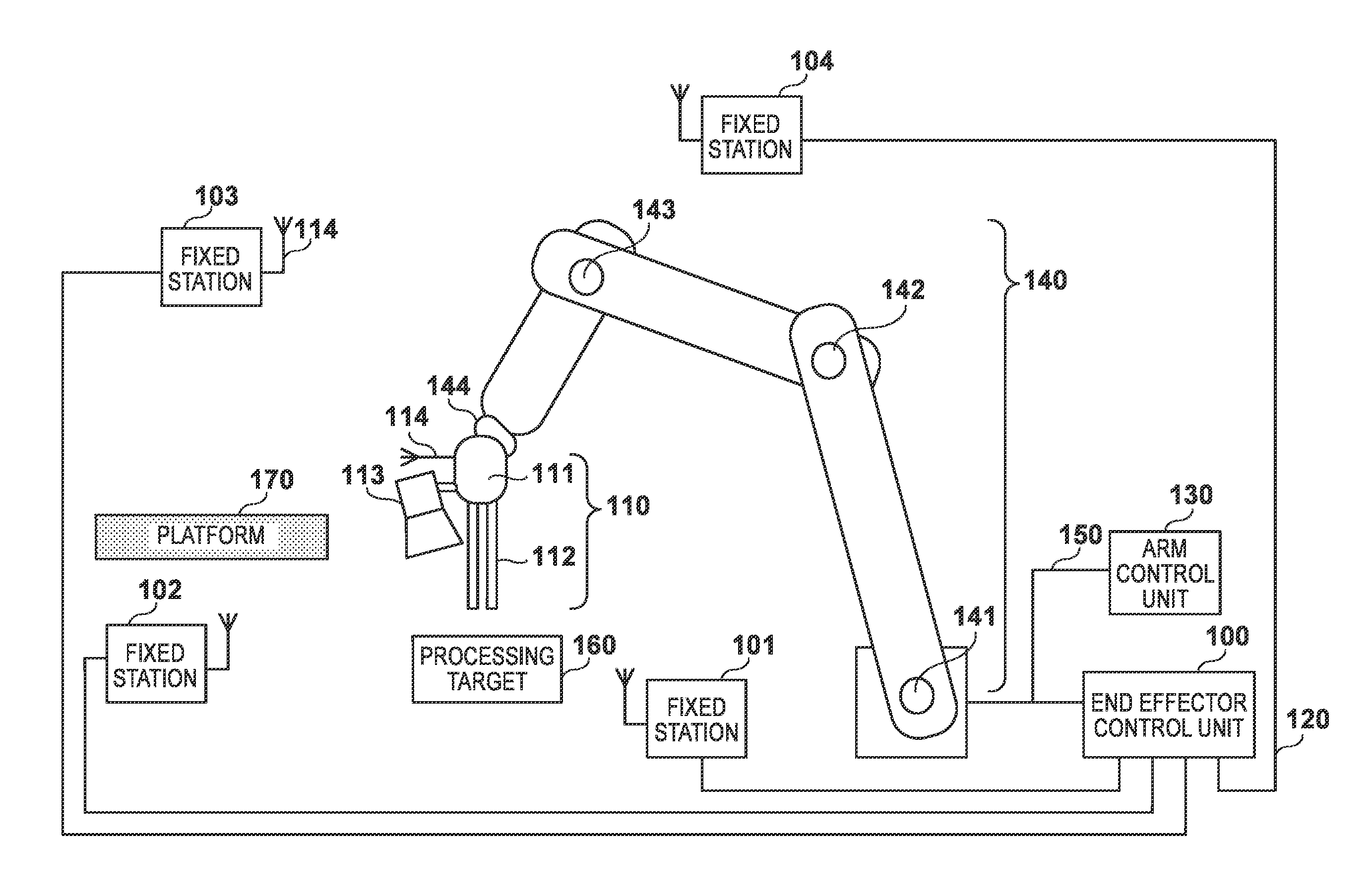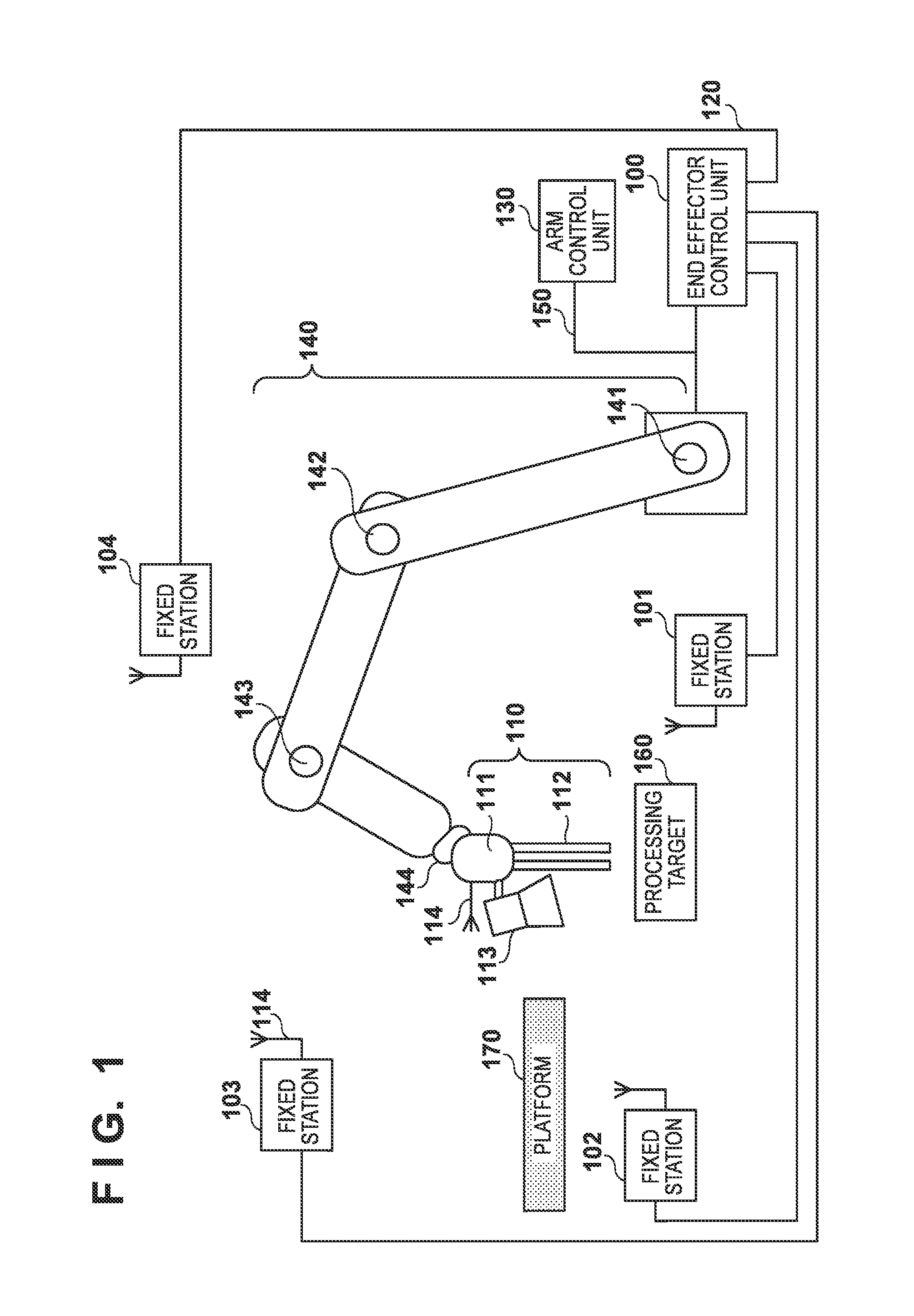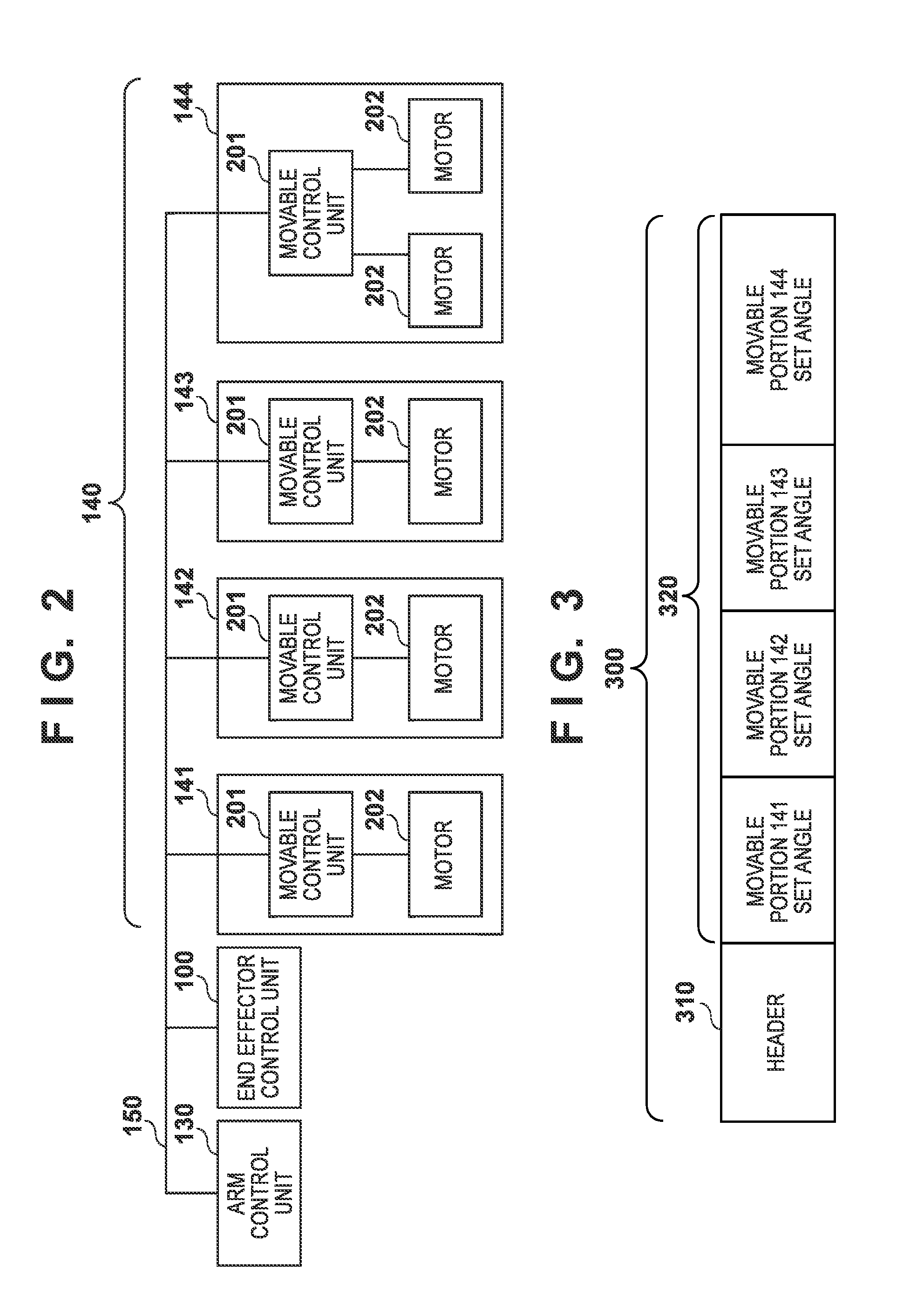Control apparatus, control method and storage medium
a control apparatus and control method technology, applied in the field of control apparatus and control methods, can solve the problems of high cost of mechanisms, high processing costs, and rapid growth of processing targets
- Summary
- Abstract
- Description
- Claims
- Application Information
AI Technical Summary
Benefits of technology
Problems solved by technology
Method used
Image
Examples
first embodiment
System Configuration
[0029]FIG. 1 is a diagram illustrating an example of the overall configuration of a system that includes a communication system according to the present embodiment. This system uses a device (a robot) including an end effector 110 and an arm 140 to perform a predetermined process on a processing target 160 and place the processing target 160 that has been processed onto a platform 170. The arm 140 includes movable portions (joints), and is capable of changing the location, orientation, and so on of the end effector 110. The end effector 110 includes, for example, a movable station 111, a pincher hand 112, and a camera 113. The movable station 111 is a communication device for performing wireless communication. The pincher hand 112 operates on the processing target 160, and the camera 113 captures that operation.
[0030]The system further includes an end effector control unit 100, fixed stations 101 to 104, and an arm control unit 130. The end effector control unit ...
second embodiment
[0062]The present embodiment will describe a system in which the arm 140 illustrated in FIG. 1 operates according to a predefined sequence. With this system, the content of the arm control signal output from the arm control unit 130 changes in the same manner with each sequence of operations. In the field of industrial devices, such cases in which the arm performs the same operations every time are comparatively numerous. In the present embodiment, this property will be used to achieve the same effects as those of the first embodiment, with a simpler configuration. The following will describe areas that are different from the first embodiment.
[0063]The arm control information detection unit 402 counts the number of times the arm control signal has been detected on the bus 150, and communicates the count value to the communication control unit 401. In the case where the power being turned on has been detected, the case where a predetermined arm control signal has been detected on the...
third embodiment
[0073]The present embodiment obtains an even better spatial diversity effect by preventing the end effector control frame from being sequentially transmitted from the same fixed station when transmitting a plurality of times from a fixed station whose communication quality is predicted to be good. The following will describe areas that are different from the first embodiment.
[0074]In S808 of FIG. 8, the communication control unit 401 selects, based on the algorithm illustrated in FIG. 11, another single fixed station whose predicted communication quality is 1. The processing illustrated in FIG. 11 is started as a result of the process of S808 in FIG. 8 being started. The communication control unit 401 defines a variable X, and substitutes ((i+[N / 2])mod N) for X (S1101). Here, the value i is i at the point in time when the process of S808 in FIG. 8 is started. N, meanwhile, expresses the total number of fixed stations. mod represents a modulo operation, and thus (A mod B) represents ...
PUM
 Login to View More
Login to View More Abstract
Description
Claims
Application Information
 Login to View More
Login to View More - R&D
- Intellectual Property
- Life Sciences
- Materials
- Tech Scout
- Unparalleled Data Quality
- Higher Quality Content
- 60% Fewer Hallucinations
Browse by: Latest US Patents, China's latest patents, Technical Efficacy Thesaurus, Application Domain, Technology Topic, Popular Technical Reports.
© 2025 PatSnap. All rights reserved.Legal|Privacy policy|Modern Slavery Act Transparency Statement|Sitemap|About US| Contact US: help@patsnap.com



